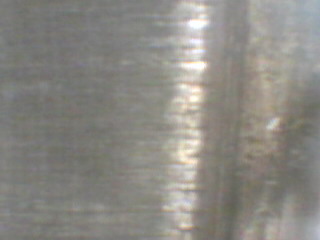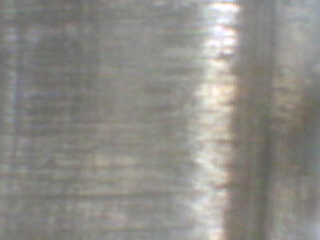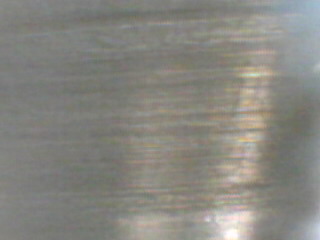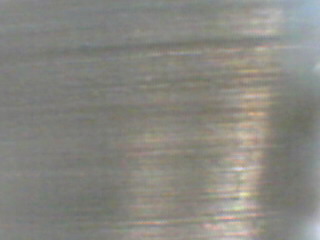TacomHQ's Structured Barrels Beat the Heat @ American Patriots Gun Club.
- - Boone
- Oct 17, 2018
- 5 min read
Quantifying the claims of firearms products manufacturers is a difficult process. Many claims fall into the category of “interesting, but too expensive to prove”. Also, testing protocols are difficult to design and rarely factor in or isolate the variables necessary to satisfy customers and professionals within the industry.
At Coastal Precision, we can’t bring ourselves to recommend

products to our customers without first testing and proving to ourselves that the claims of the manufacturer hold water. In the previous post, we sought to test the harmonics of the structured barrel from TacomHQ. That test proved to us that this barrel design provides the most harmonically quiet results of any similarly weighted barrel that we’ve tested over the years.
The president of TacomHQ, John Baker, liked the testing protocol we employed but insisted that this harmonic phenomenon was only one feature of his barrels, and perhaps not the most important feature. He has strong suspicions that the obvious heat dissipating ability of his structured barrels may lead to longer barrel life and lower SD’s throughout the useful wear life of the barrel.
We are always looking for opportunities to gather data in testing our equipment and to ready for competition. We headed to the Arena Training facility in Blakely, Georgia to test several of our custom builds and more importantly the performance of our custom ammo. We took along the 6mm Creedmoor Structured Barrel from the previous post to also test heat dissipation at the same time.
For the purposes of our research, the assumed duty cycle for these barrels will be similar to the stresses found in a Precision Rifle Series stage. Our testing protocol was 20 shot strings followed by temperature measurement with a Fluke IR non-contact thermometer. We also created a simple dummy round for an additional data point within the chamber. This was made from a modified case with a Sinclair trim/chamber length insert and was allowed to soak in the chamber for five minutes.
Understanding the relationship between barrel heat and wear life of a barrel requires us to take into account many factors. The primary and most obvious indicator of barrel life is accuracy. This is difficult to isolate but intuitively this is the way most of us judge barrel life. For our purposes, we want to be a bit more clinical in our assessment.
Throughout the life of our 6mm Creedmoors we will continue to compare the throat of the structured barrel against the Ruger Precision barrel. Conventional industry wisdom would have us believe that the Mil-Spec 4150 steel in the RPR would handle heat stress better than the 416 stainless of the Broughton barrel from which TacomHQ machined our structured barrel. Though the structured barrel is much larger in diameter, these barrels are approximately equal in weight. From our preliminary tests the RPR reaches “heat soak” much quicker. In fact, the outside surface of the structured barrel never reached full “heat soak” within the testing parameters. (see video)
We know that heat plays a large role in barrel life. Fortunately, a great deal of our tax dollars have already gone toward research on the many factors that affect barrel life. Much can be gleaned from this research. (See, “Wear and Erosion in Large Caliber Gun Barrels”, by Richard G. Hasenbein and “Rifle Barrel Burn Out”, by John Barsness) The comparisons and science in these papers seem to confirm our suspicions regarding barrel life. The military was highly motivated by the logistics and cost of barrel replacement of large bore weapons and thus have researched and implemented many strategies to counter the agents of barrel wear. The civilian market is no different.
The most talked about metric in small arms barrel life discussions is throat erosion. Most of those conversations are limited to the most basic aspects of mechanical and thermal degradation, powder and bullets physically removing material. In fact, there are components of thermal, chemical, and mechanical degradation contributing to barrel wear. Beyond this, accuracy is obviously not only affected by the additional jump caused by throat erosion. The axial mating of the surfaces of modern precision projectiles and a weapon’s throat are a large component of accuracy. Nowhere is this more obvious than in large bore rifles utilizing monolithic projectiles that are sensitive to the most minute changes within the throat. Heat checking of the surface of a rifle’s lands has been shown to decrease muzzle velocity, increase fouling, and even deform the bearing surface of projectiles. (This will be discussed in greater detail in our upcoming article on the TacomHQ 375 Cheytac.) Also,shot-start-force, aka engraving pressure, must remain consistent to create low standard deviations and thus potentially create smaller group dispersion.
The existing research leaves little room to doubt the thermal component of throat erosion can be mitigated through better heat dissipation. This follows as no shooter would question the increase in barrel life by keeping shot strings short. Until TacomHQ came along, the only other methods for increasing barrel life were heavier barrels, novel bore coatings, improving shoulder angle, etc. Multiple elements of the TacomHQ’s design contribute to superior heat dissipation. The internal fluting increases surface area and creates thermal convections similar to the method employed by solar chimneys. Much of the barrel is also covered in shallow threads which brings the total increase in surface area over a similarly weighted barrel to over 300%. Finally, the bead-blasted finish of the stainless barrel leads to even more heat dissipation and also heat reflecting properties. Anyone shooting barrels on a hot, sunny day can appreciate that.
The heat dissipating abilities of the structured barrel may not be reserved for the seasoned competitor who reloads 100% of his ammo. Factory ammunition shooters may benefit even more from this phenomenon. It is currently very popular for ammunition manufacturers to utilize double, and even triple based, canister powders in order to achieve high muzzle velocities. Unfortunately, the flame temperature of these powders is often significantly higher than the single base powders employed by handloaders. In normal barrels this undoubtedly leads to a reduction in barrel life. Here again it would be reasonable to expect longer wear life from a faster cooling barrel. Also, factory ammo tends to be more temperature sensitive. By maintaining lower chamber temperature, shot strings should have lower SD's.
Finally, let’s consider the best proof I have seen so far. John brought one of TacomHQ’s 300 Norma test rifles. Similar to the RUM, the Norma suffers from short barrel life and excessive barrel heat in normally configured/barreled setups. In the video this rifle is being fired in long strings at one of our favorite ranges in southeast Georgia, American Patriot Gun Club. It hover around 90 degrees all day long and we were always able to bare-hand this rifle. At the end of a long day of shooting this 300 Norma and many other TacomHQ test rifles we broke out the cleaning equipment and brought the Norma down to it bare bore so we could inspect it for throat erosion. Much to our surprise, with over 1,200 rounds logged for the barrel, we saw the appearance we’d expect from a freshly broke-in 300 Norma Mag. There was a freakishly small amount of heat checking forward of the case mouth area and there was next to no visible throat erosion. John had measurements from the freshly cut chamber that showed less than 0.012”of throat erosion. More importantly, however, without the normal amount of heat checking affecting the surface finish of the throat, this 0.012” will mostly likely be meaningless with regard to accuracy.
Though definitive proof is a long way down the testing road I have great confidence that there are many cost-effective advantages to TacomHQ’s structured barrels. Theoretically and in all likelihood, simply keeping the full heat soak of a barrel from ever occurring is the first step in increasing barrel life. While it will take much more testing to confirm these hypotheses, I will not be the slightest bit surprised when they are.































Comments